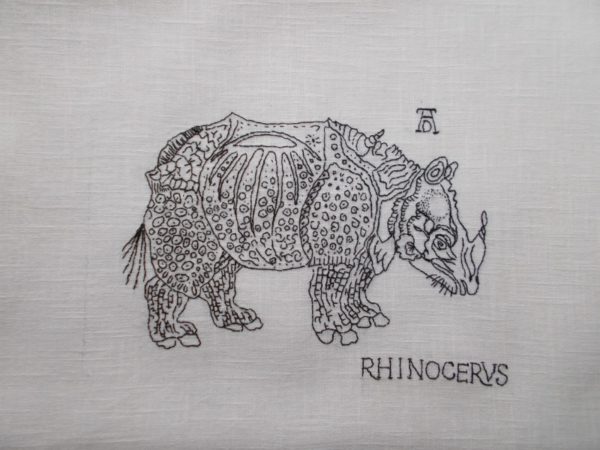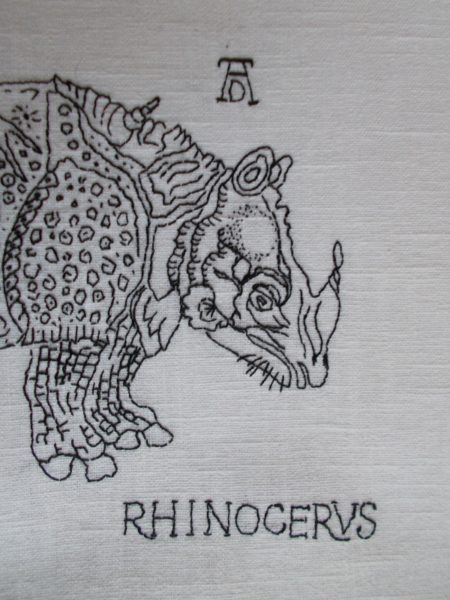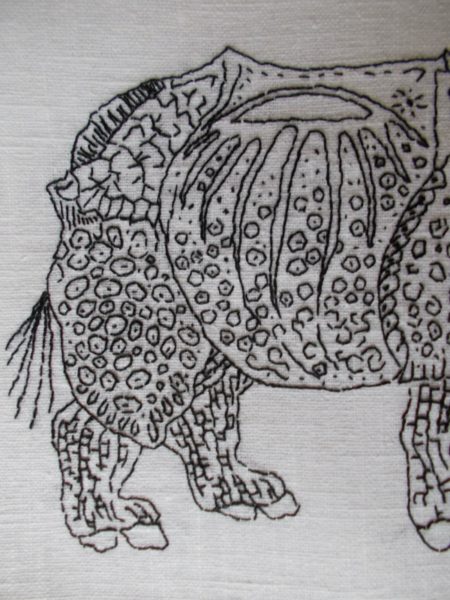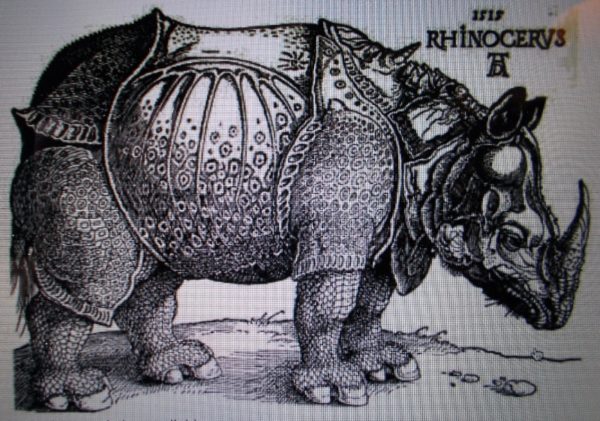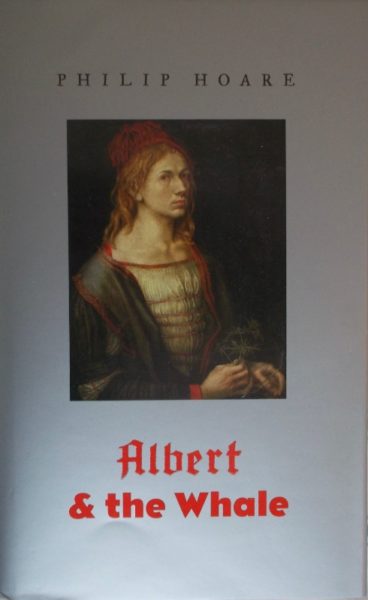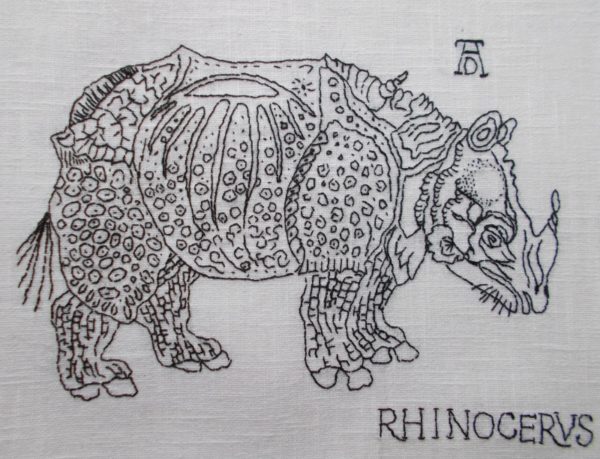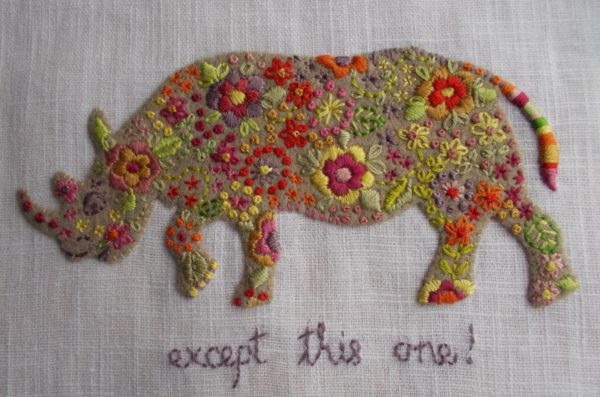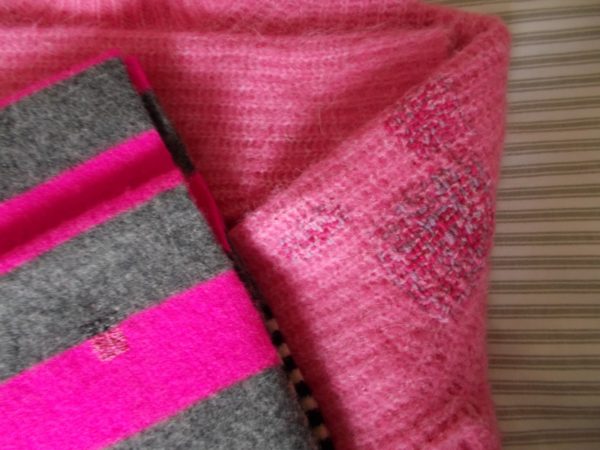
Reiss jumper with two colour darning (plus my Jigsaw scarf with darned moth hole)
A year ago we first entered lockdown and began to understand the reality of living with a pandemic.
This week, just the other side of Cheltenham, the annual Horse Racing Festival is in full swing – that is for horses, riders and support staff but without a single spectator. Last year the organisers were hauled over the coals for letting the racing go ahead and for the subsequent possible seeding of Covid all over the country as people came together in crowded stands and then returned home – many on crowded trains. This year, the police, wary at having the finger of blame pointed at them for lack of public order, have even closed off an entire hill to prevent crowds gathering. Cleeve Hill is the highest point in the Cotswolds and rises above the racecourse snug in its own natural amphitheatre. No more than just a good pair of binoculars away, the hill is obviously quite a tempting destination for a thwarted racegoer – or thousands of racegoers which is where the problem would come as such gatherings are still against the law, not to mention common sense.
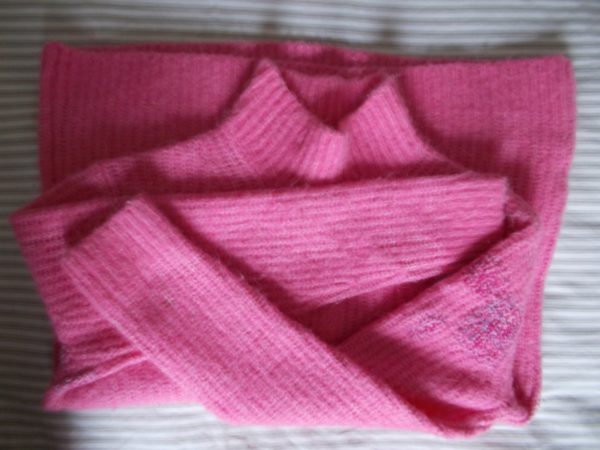
Pink Reiss jumper with darned patches on arm
Our self imposed lockdown had started a week earlier. Tickets for Sunday 15 March for Fascinating Aida at the Town Hall had been burning a little hole in my brain. I’d been looking forward to the show but was already wary of reports of escalating infections. Fortuitously, the friend I’d asked to come along is married to a retired professor of biological sciences, so we put our dilemma to him. ‘Don’t go’, he said succinctly. So we didn’t. Further, impressed by his clarity, David and I tucked up tight right there and then.
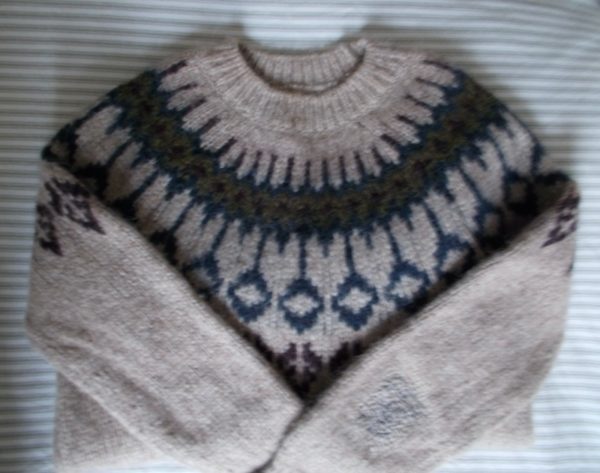
Toast jumper with darned elbow (plus invisible darn in middle of Fair Isle)
Last Sunday was Mothering Sunday and all the more enjoyable for each of my children getting in touch. A phone call from the London household left one 3 year old thoroughly confused as she buzzed busy as a nectar hunting insect over to the phone to wish ‘Happy Mother’s Day Granny Mary” before bustling off to some more interesting flower – but before she flew away she just caught me saying “It isn’t Mother’s Day … it’s”. The damage was done. “Granny Mary says it’s not Mother’s Day”, she chanted repeatedly and somewhat affrontedly in that way small children have when they feel they’ve been lured into believing something now shown not to be true. Meanwhile the adults in the London house rolled their eyes and no doubt exchanged arch looks at each other. “I knew mum would say that,” Daughter No 3 interjected as they tried to recall the dancing nymph for an explanation. In defence of my pedantry, I am married to an Anglican priest for whom such things matter (For the difference between Mothering Sunday and Mother’s Day see * below).
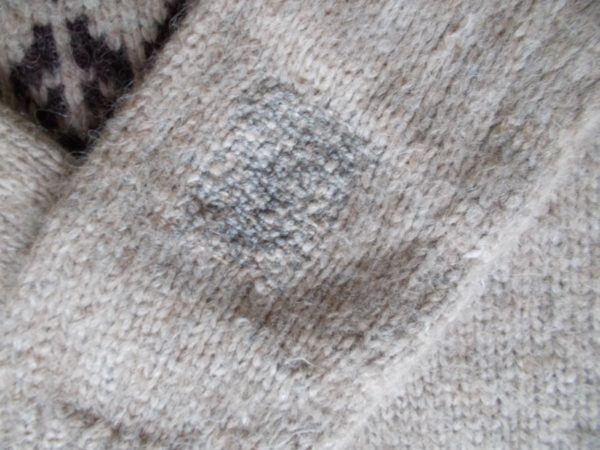
Toast jumper – close up of darned sleeve
Later in the day our next door neighbour and their 2 girls surprised us with two little bags of homemade baking. One bag contained two star shaped scones and the other one had 3 little biscuits in the shape of flowers with stem and leaves – all iced beautifully in different colours – I should have photographed them!
Too much close work has led to a bit of deterioration of my sight, so it was off to be tested for new lenses. Had a fascinating discussion with our excellent optician as we got round to talking about research that indicates young children need to spend plenty of time playing outside because it helps prevent short sightedness. He explained a bit of the science behind this but then surprised me by saying it had recently possible to treat incipient short sightedness by the use of special contact lenses which, worn at night, re-shape the lens and even reverse myopia. He is already treating children in this way. Fascinating!
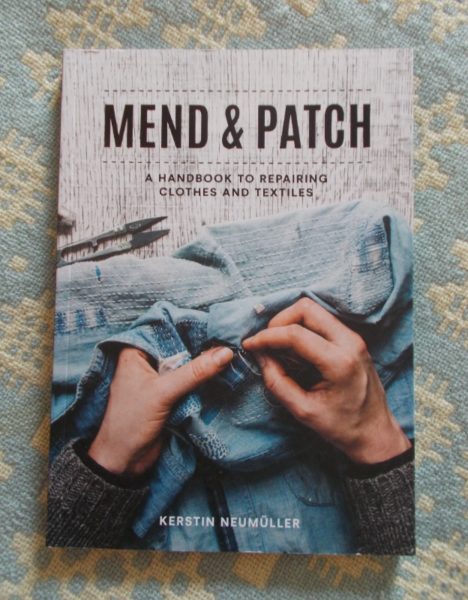
Mend and Patch by Kerstin Neumüller (pub. Pavilion 2018)
Meanwhile it’s been a bit of a mending and altering week. Daughter No 1 sent a bagful of holey knitwear which I have been working through as best I can. Both jumpers shown (the pink one is Reiss, the oatmeal one is Toast) would not have been cheap but seem to be made of a poor quality yarn – part a loose slightly fluffy yarn spun around a thin thread of what is probably an artificial fibre, a combination that doesn’t wear well and is a bit of a devil for the mender. Even worse, the pink jumper seems to have suffered a chemical attack that has eaten away the pink yarn to reveal a white plastic thread. Having no pink of the right colour I opted for one bright pink thread woven with a pale mauve one. Oh well, Daughter No 1 will get a bit more wear out of them both, but really, you don’t always get what you think you’re paying for. Other jumpers I’ve mended are too dark to show which is a shame because one jumper I mended with tiny moth holes has worked out rather well.
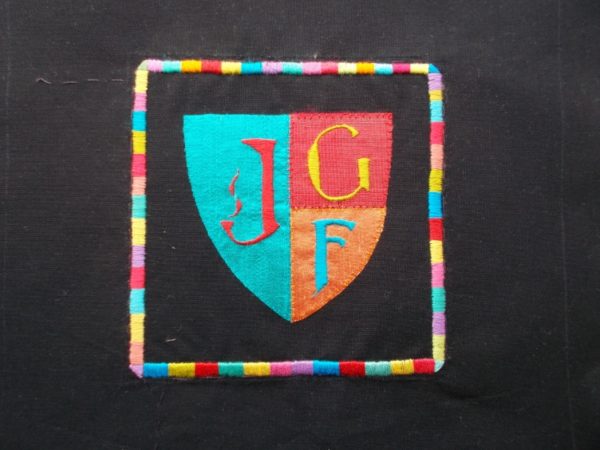
JGF monogram – new border
I decided the border on the monogram done for my son-in-law was too wide and clunky, so I re-did that too.
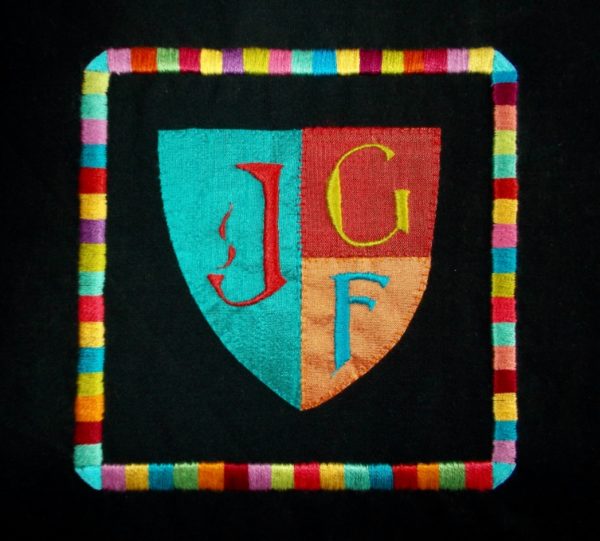
JGF monogram – old border
*A brief note on Mothering Sunday and Mother’s Day. Mothering Sunday, the fourth Sunday in Lent, was traditionally the day families made a special outing together to the mother church or cathedral for a service of dedication. The day became even more important in Victorian times as people in service in big houses and those serving apprenticeships in the towns were given a day off to go back to see their own families and to go to church with them. Young women often went home bearing Simnel Cakes and flowers picked from the hedgerow.
Mother’s Day was the inspiration of Ann Jarvis of Philadelphia who, grief stricken by the death of her own mother, campaigned for a day to be allocated for the celebration of mothers. This falls on the second Sunday in May.

